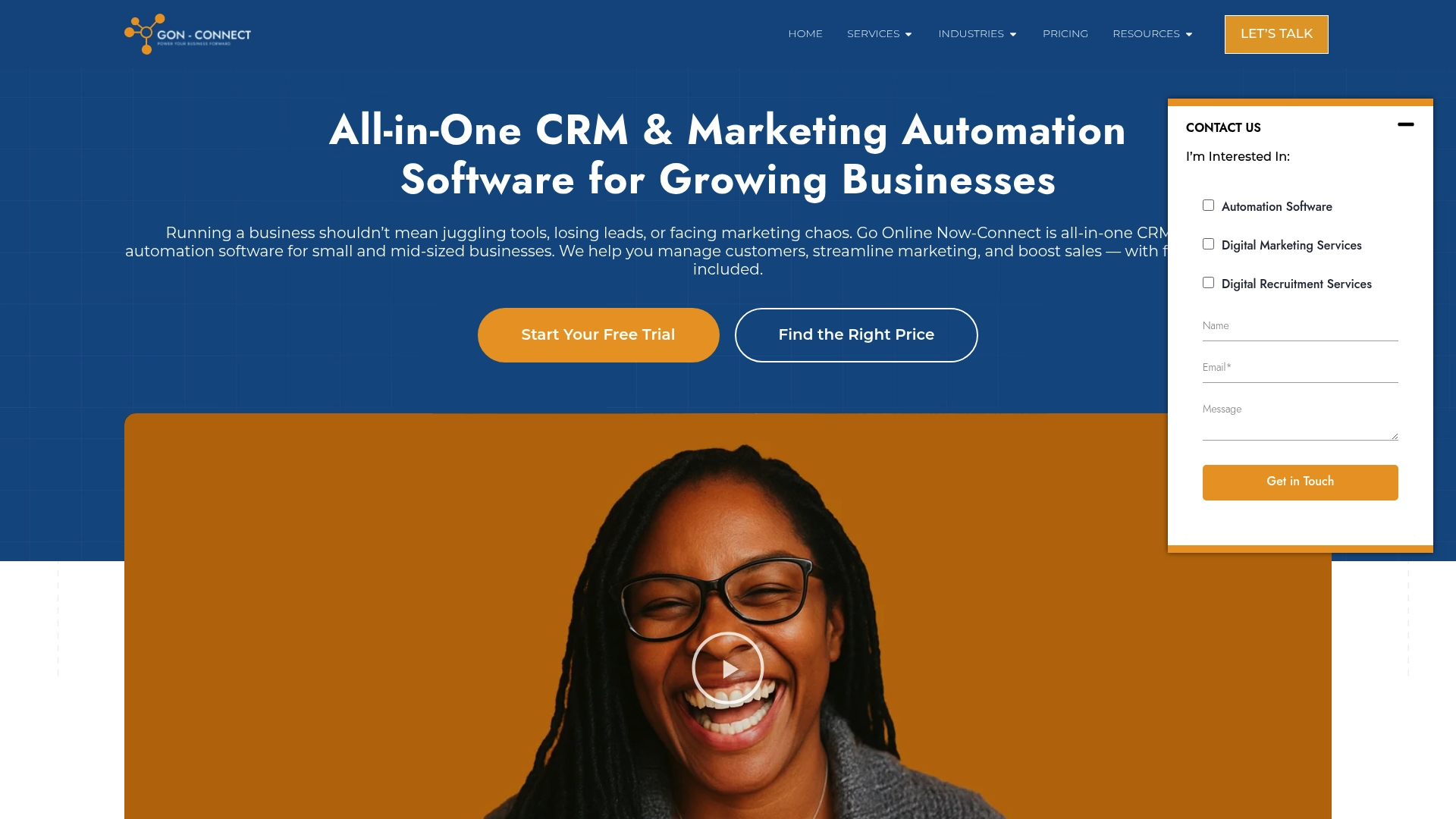Most businesses lose up to 25 percent of potential revenue because of poor lead management. Many teams still view lead management as a simple checklist, but the reality is much more complex. Confusion about best practices and common myths can leave valuable prospects slipping through the cracks. This guide clears up the biggest misconceptions and lays out the core steps you need for real sales results.
Defining Lead Management Fundamentals and Myths
Lead management is a strategic process of capturing, tracking, and nurturing potential customers from initial contact to final sale. According to research from ijstr.org, effective lead management involves multiple critical stages that help businesses convert prospects into loyal customers.
Lead management essentially functions as a comprehensive system designed to transform potential interest into tangible business opportunities. It goes beyond simple contact tracking by creating a structured approach to understanding, engaging, and converting leads. The primary goal is to optimize the sales process, reduce wasted resources, and maximize conversion rates.
Most businesses misunderstand lead management as a linear process. In reality, it’s a dynamic, cyclical journey involving several interconnected stages:
- Leadgeneratie: Attracting potential customers through various marketing channels
- Lead Qualification: Assessing prospect’s potential and likelihood of purchasing
- Lead-koestering: Developing relationships and providing relevant information
- Lead Conversion: Transforming qualified leads into actual customers
- Lead Tracking: Monitoring lead progression and performance metrics
Common myths about lead management can significantly hinder business growth. Contrary to popular belief, lead management is not just about collecting contact information or making immediate sales. As ijstr.org research suggests, it’s a nuanced process requiring patience, strategic communication, and personalized engagement.
Successful lead management demands continuous refinement of strategies, leveraging data-driven insights, and maintaining a customer-centric approach. By understanding these fundamentals, small and medium businesses can transform their approach from sporadic lead chasing to systematic, efficient customer acquisition.
Key Lead Management Stages and Processes
Lead management is a complex, multi-stage process that transforms potential customer interest into actionable business opportunities. According to Zinfi, the lead management lifecycle comprises several critical phases that require strategic coordination and precision.
Lead Capture represents the initial stage where businesses identify and collect potential customer information. Oracle emphasizes that effective lead capture goes beyond simple contact collection, involving sophisticated strategies to attract high-quality prospects through targeted marketing channels.
The comprehensive lead management process typically involves these interconnected stages:
- Leadgeneratie: Attracting potential customers through diverse marketing strategies
- Lead Qualification: Evaluating prospect’s fit and potential purchasing likelihood
- Lead Scoring: Ranking leads based on their engagement and conversion potential
- Lead-koestering: Developing meaningful relationships through personalized communication
- Lead Conversion: Transforming qualified leads into paying customers
Each stage requires specific techniques and tools. Zinfi suggests that successful lead management demands continuous monitoring, adaptive strategies, and a data-driven approach.
 Small and medium businesses must implement robust systems that track lead interactions, analyze engagement patterns, and optimize conversion pathways.
Small and medium businesses must implement robust systems that track lead interactions, analyze engagement patterns, and optimize conversion pathways.
Understanding these stages allows businesses to create a systematic, efficient approach to customer acquisition. By integrating advanced tracking mechanisms and maintaining a customer-centric perspective, companies can transform their lead management from a reactive process to a proactive growth strategy. If you want to dive deeper into optimizing your lead generation efforts, check out our lead nurturing process guide for SMB growth.

Types of Leads and Qualification Models Explained
Lead classification is a critical component of effective business strategy, enabling companies to prioritize and engage potential customers strategically. According to ijstr.org, understanding different lead types and their qualification models is essential for optimizing conversion potential.
Lead Types can be broadly categorized based on their origin, engagement level, and potential value. These classifications help businesses develop targeted approaches for different prospect segments:
- Marketing Qualified Leads (MQLs): Prospects who have shown interest through marketing channels
- Sales Qualified Leads (SQLs): Leads deemed ready for direct sales engagement
- Product Qualified Leads (PQLs): Potential customers who have already used the product
- Service Qualified Leads: Existing customers interested in additional services
- Cold Leads: Prospects with minimal prior interaction
Qualification models provide a systematic approach to evaluating lead potential. The most common frameworks include:
- BANT Model: Budget, Authority, Need, Timeline
- CHAMP Model: Challenges, Authority, Money, Prioritization
- MEDDIC Model: Metrics, Economic Buyer, Decision Criteria, Decision Process, Identify Pain, Champion
ijstr.org emphasizes that successful lead qualification requires a nuanced approach that goes beyond simple categorization. Small businesses must develop adaptive models that consider multiple factors, including potential customer needs, engagement history, and strategic alignment.
To streamline your lead management process and develop more effective qualification strategies, check out our guide on mastering the lead generation process for 2025 success. By implementing sophisticated lead classification techniques, businesses can significantly improve their conversion rates and optimize their sales funnel.
Role of CRM and Automation in Lead Management
Customer Relationship Management (CRM) and automation technologies have revolutionized lead management for small and medium businesses. According to Oracle, these integrated systems provide unprecedented capabilities for tracking, nurturing, and converting potential customers with remarkable efficiency.
The core functions of CRM and automation in lead management include:
- Centralized Contact Management: Consolidating all lead and customer information in one platform
- Automated Lead Tracking: Monitoring lead interactions and engagement across multiple channels
- Intelligent Scoring: Ranking leads based on their potential and interaction history
- Gepersonaliseerde communicatie: Triggering targeted messages based on specific lead behaviors
- Performance Analytics: Generating comprehensive insights into lead conversion processes
Zinfi emphasizes that successful integration requires a strategic approach. Modern CRM systems go beyond simple contact storage, transforming into intelligent platforms that predict customer needs, automate repetitive tasks, and provide real-time insights that drive decision-making.
Small businesses can dramatically improve their lead management effectiveness by leveraging these technologies. Automation reduces manual work, minimizes human error, and allows sales teams to focus on high-value interactions. To understand how to implement these powerful tools effectively, explore our guide on understanding the small business marketing automation process. By embracing these technologies, businesses can create more responsive, data-driven lead management strategies that accelerate growth and improve customer relationships.
Critical Lead Management Challenges and Costs
Lead management presents complex challenges that can significantly impact a business’s bottom line. According to Zinfi, small and medium businesses frequently encounter substantial obstacles that can dramatically increase operational costs and reduce conversion effectiveness.
The most critical challenges in lead management typically include:
- Data Quality Issues: Inaccurate or incomplete lead information
- Toewijzing van middelen: Inefficient time and budget distribution
- Technology Integration: Complexity of connecting different marketing tools
- Lead Tracking Gaps: Losing potential customers in the conversion funnel
- Scalability Limitations: Difficulty managing increasing lead volumes
Zinfi highlights that these challenges can result in significant financial implications. Small businesses may lose up to 25% of their potential revenue due to ineffective lead management processes. The associated costs go beyond direct monetary losses, encompassing:
- Wasted Marketing Expenditure: Spending on unqualified or unproductive leads
- Opportunity Costs: Missing potential high-value customer interactions
- Operational Inefficiencies: Time spent on manual lead management tasks
- Technology Investment: Expenses related to implementing and maintaining complex systems
Understanding these challenges is crucial for developing strategic approaches. ijstr.org suggests that proactive management and strategic technology adoption can mitigate these risks. To gain deeper insights into overcoming these challenges, explore our guide on understanding the small business marketing automation process, which provides practical strategies for more effective lead management.
Common Mistakes and Best Practices for SMBs
Lead management requires strategic precision, and small businesses often encounter significant challenges in their approach. According to Zinfi, many SMBs unknowingly sabotage their lead conversion potential through common operational missteps.
Common mistakes that dramatically undermine lead management effectiveness include:
- Inconsistent Lead Tracking: Failing to systematically monitor lead interactions
- Premature Sales Outreach: Engaging leads before they are genuinely qualified
- Neglecting Lead Segmentation: Treating all leads with identical communication strategies
- Manual Data Management: Relying on spreadsheets instead of automated systems
- Inadequate Follow-up Protocols: Inconsistent or delayed lead engagement
Oracle emphasizes that successful lead management demands a structured, technology-enabled approach. Best practices that can transform lead management performance include:
- Implement Robust CRM Systems: Centralize and automate lead tracking
- Develop Clear Qualification Criteria: Create precise lead scoring mechanisms
- Personalize Communication Strategies: Tailor interactions based on lead behaviors
- Establish Consistent Follow-up Workflows: Create systematic engagement processes
- Continuously Analyze and Optimize: Regularly review lead management performance
By recognizing and addressing these critical challenges, small businesses can significantly improve their lead conversion rates. For comprehensive insights into enhancing your digital marketing approach, explore our digital marketing tips guide for SMBs, which provides actionable strategies to elevate your lead management effectiveness.
Simplify Your Lead Management with Smart Automation and CRM Solutions
Managing leads from capture to conversion is challenging for many small businesses. Common issues like inconsistent tracking and manual data handling slow growth and waste valuable time. The article highlights the critical need for a streamlined, data-driven approach using things like lead scoring and nurturing to maximize conversion rates without the headache.
You deserve a system that works with your business, not against it. Our all-in-one platform combines powerful marketing automation with a unified CRM to give you clear insights, personalized lead engagement, and consistent follow-up—all in one affordable, easy-to-use solution. Whether you want to improve your lead qualification or automate your pipeline tracking, Go Online Now-Connect delivers tools designed specifically for SMBs that want to grow smarter.
Explore advanced automation strategies in our Automatiseringsarchieven and boost your digital efforts through expert guidance in our Digitale marketingarchieven. Ready for results that matter today?

Take control of your leads with Go Online Now-Connect now at https://goonlinenow.co. Start converting more while saving time with a platform and team built to support your growth every step of the way.
Veelgestelde vragen
What is lead management?
Lead management is the process of capturing, tracking, and nurturing potential customers throughout their journey from initial contact to final sale. It aims to optimize the sales process and maximize conversion rates.
What are the key stages of lead management?
The key stages of lead management include lead generation, lead qualification, lead scoring, lead nurturing, and lead conversion, each requiring specific techniques and tools for effective execution.
How does CRM help in lead management?
Customer Relationship Management (CRM) systems assist in lead management by centralizing contact information, automating lead tracking, scoring leads based on engagement, and enabling personalized communication, which ultimately enhances conversion processes.
What common mistakes should SMBs avoid in lead management?
Common mistakes include inconsistent lead tracking, engaging leads prematurely, neglecting segmentation, relying on manual data management, and inadequate follow-up protocols. Addressing these mistakes can significantly improve lead conversion rates.

